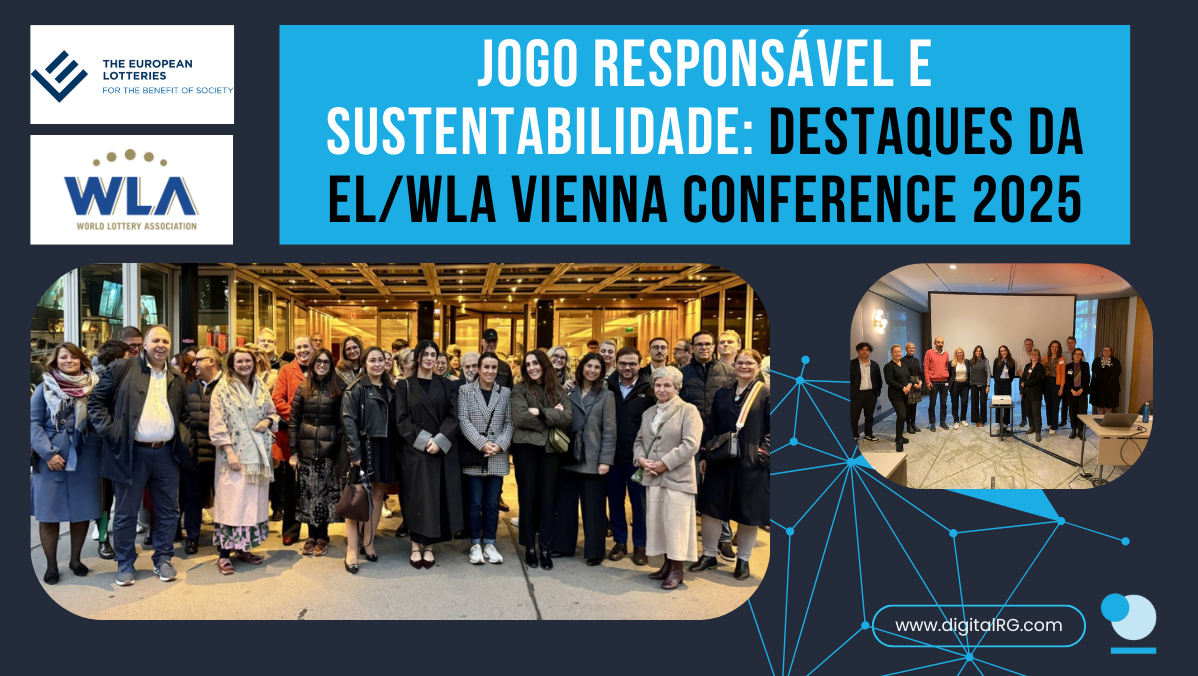Loyalty and Rewards Programmes for Players

Loyalty and Rewards Programmes for Players
Linking Loyalty Programs To Responsible Gaming Tool Use
Wohl (2017) ‘Evidence Exchange Report’ Linked here
“For a Responsible Gaming orientated loyalty scheme, in addition to (Or instead of) receiving points for money spent gaming, players would receive reward points for, among other things, setting a limit on the amount of money and time spent gaming, adherence to those limits, watching educational videos, and using a budgeting tool.”
Arguments For Responsible Gaming Tools
“Rewarding players for using Responsible Gaming tools will provide them with added value for money spent gaming. This is important because customers expect to receive superior value for their money and when value is not perceived, customers will stop purchasing and using a company’s products.
Companies need to maximise the perceived value of the product or services they offer. Rewarding Responsible Gaming will add value and thus should entice some players to use Responsible Gaming tools that might otherwise be ignored. That is, players may begin to see the presence of Responsible Gaming tools as an opportunity for reward as opposed to an annoying aspect of the game. The net effect may be greater use of Responsible Gaming tools.”
Best Practice Recommendations
Responsible Gaming Best Practices for Player Incentives: Land-based Venues (2013) - Centre for the Advancement of Best Practices Linked here
“Ensuring Marketing Incorporates an RG Perspective
Beyond the provision of good consumer information, there are also ways that loyalty programs and incentives can be managed in a way which reduces the risk of gaming problems. These include:
- Ensuring that any information contained in promotional communications and materials complies with existing RG guidelines for advertising and marketing, and does not imply that participating in loyalty programs or other incentives increases the player’s chances of winning.
- Permitting players to have only one card for the same loyalty program membership.
- Incorporating RG information in promotional communications and materials with adequate prominence relative to other messaging.
- Having an annual renewal for loyalty program membership that gives players an opportunity to review their past-year gaming activity with gaming venue staff.
- When players register for a loyalty program, requiring them to opt in explicitly to each form of marketing communication (e.g., mail, email, phone, texts) they wish to receive.”
“Optimising RG in the Earning and Redemption of Rewards
- Allowing players to earn points and rewards not just for the time and money they spend gaming, but for participating in non-gaming activities as well, both inside and outside of the gaming venue.
- Encouraging players to set personal gaming limits on their loyalty card. If players reach one of the limits they have set, have a message tell them that they have reached a limit. If players still continue to gamble, don’t allow them to accrue any additional loyalty points.
- Rewarding players with (non-gaming) incentives for using the self-limiting tools.
- Allowing players to redeem their loyalty points for non-gaming rewards both inside and outside of the gaming venue (e.g., merchandise, food).
- Allowing players to participate in contests without having to be at the gaming venue when prizes are announced.
- Allowing a cooling-off period after players have lost a large sum of money before offering any incentive to gamble further. Once such a player has left the premises, allow a reasonable amount of time to pass before offering that player an incentive to return to the venue.
- Once they become loyalty members, allowing players to easily opt out of some, or all, forms of marketing communication at any time.”
“At-Risk Players
- Using loyalty card data, in combination with staff observations and other documentation, to identify red flag behaviours that may indicate a potential gaming problem.
- Putting a customer service protocol in place to identify when and how staff will take action when a loyalty member exceeds red flag thresholds for frequency of gaming, duration of sessions, average bet size, and cumulative losses.
- Having an escalating process in place to offer red-flagged players assistance, education, as well as the option of easily removing themselves from future incentives or marketing communications. (The same system would also be used for those players exhibiting red flag behaviours who are not loyalty club members.)
- Discontinuing rewards that, in order to be redeemed, require the player to be in the venue for extended periods of time—particularly if it means the player can access more cash (because, for instance, a new banking day has begun).
- Discontinuing discretionary rewards designed to promote longer stays.”
“Self-Excluded Players
- When players sign up for self-exclusion, immediately removing their name from all marketing contact lists.
- Paying out any unredeemed points and cancelling the loyalty program membership immediately when a player self-excludes.”
Lottery Example
Veikkaus Oy - Veikkaus Points - Link to report
Veikkaus Oy was the Finnish national betting agency, owned by the government, with an exclusive betting licence to lotteries and sports betting in Finland. In 2017, the company merged with RAY and Finito, to become a new company: “Veikkaus”. Unfortunately, Veikkaus did not continue this scheme after the merger. The practice is however worth knowing.
The scheme - Veikkaus points
Veikkaus Oy had a gamified loyalty programme which was based on CSR and RG topics. This programme was used to educate players, share knowledge about Veikkaus beneficiaries, campaigns, products and more. It was invented as a channel for engaging customers, and significantly did not reward for increased levels of gaming.
How did it work?
Customers earned points from different ‘missions’. These missions were for example watching videos, collecting ‘Lotto’ balls on the website and completing a test on game addiction. Points earned from these missions could be redeemed against small prizes, such as movie tickets and coffee cups; or customers could select to be entered into a raffle for bigger prizes such as a bike.

These missions were not just offered on the website, but across Veikkaus channels, for example social media and at points of sale. Customers were not only rewarded for playing, but rather for being active otherwise. Thus, a customer playing a lot of Lotto and a customer playing less were on the same page.
Monitoring and Evaluation
The programme had proved to be a success, some examples of statistics which show this are (Statistics from 2016):
- Over 145,000 out of the 400,000 weekly buying customers chose to participate.
- A total of 4.6 million missions had been done.
- Veikkaus beneficiaries had received 1000% more visibility.
- The number of gaming addiction tests taken had increased by 500%.
- There were 18,000 pieces of user feedback - 79% of which has been positive.
Category
Other Blogs

March 14, 2022
Responsible Gaming Codes of Conduct – Are they worth the paper they are written on?

March 10, 2022
Responsible gaming tool: “Limit Setting” – its chances, challenges and shortfalls

March 03, 2022
Reporting using the UN Sustainable Development Goals

February 04, 2022
GambleAware: Women’s Gambling Harm Prevention Campaign

November 21, 2025
Tackling Retail Emissions in the Lottery Value Chain: Insights from the EL Webinar

October 27, 2025
Jogo Responsável e Sustentabilidade: Destaques da EL/WLA Vienna Conference 2025

October 27, 2025
Perspectivas de la EL/WLA Vienna Conference 2025

October 23, 2025
Insights from the EL/WLA Vienna Conference 2025


